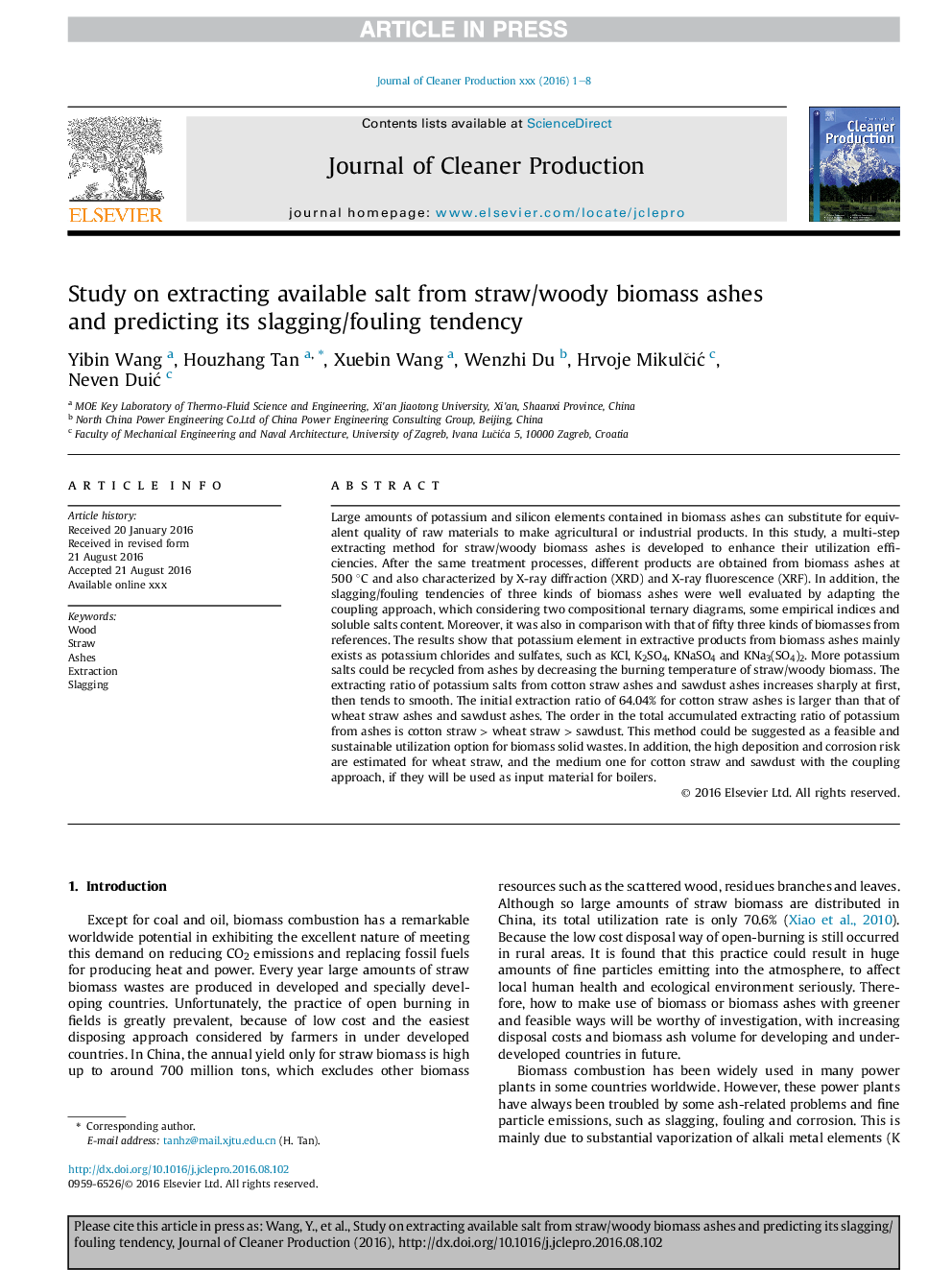| کد مقاله | کد نشریه | سال انتشار | مقاله انگلیسی | نسخه تمام متن |
|---|---|---|---|---|
| 5479702 | 1399306 | 2017 | 8 صفحه PDF | دانلود رایگان |
عنوان انگلیسی مقاله ISI
Study on extracting available salt from straw/woody biomass ashes and predicting its slagging/fouling tendency
ترجمه فارسی عنوان
مطالعه در مورد استخراج نمک موجود از خاکستر زراعی نی / خاک زراعی و پیش بینی آن گرایش شلغزدن / گرده افشانی
دانلود مقاله + سفارش ترجمه
دانلود مقاله ISI انگلیسی
رایگان برای ایرانیان
کلمات کلیدی
چوب، کاه، خاکستر، استخراج، سرباره
موضوعات مرتبط
مهندسی و علوم پایه
مهندسی انرژی
انرژی های تجدید پذیر، توسعه پایدار و محیط زیست
چکیده انگلیسی
Large amounts of potassium and silicon elements contained in biomass ashes can substitute for equivalent quality of raw materials to make agricultural or industrial products. In this study, a multi-step extracting method for straw/woody biomass ashes is developed to enhance their utilization efficiencies. After the same treatment processes, different products are obtained from biomass ashes at 500 °C and also characterized by X-ray diffraction (XRD) and X-ray fluorescence (XRF). In addition, the slagging/fouling tendencies of three kinds of biomass ashes were well evaluated by adapting the coupling approach, which considering two compositional ternary diagrams, some empirical indices and soluble salts content. Moreover, it was also in comparison with that of fifty three kinds of biomasses from references. The results show that potassium element in extractive products from biomass ashes mainly exists as potassium chlorides and sulfates, such as KCl, K2SO4, KNaSO4 and KNa3(SO4)2. More potassium salts could be recycled from ashes by decreasing the burning temperature of straw/woody biomass. The extracting ratio of potassium salts from cotton straw ashes and sawdust ashes increases sharply at first, then tends to smooth. The initial extraction ratio of 64.04% for cotton straw ashes is larger than that of wheat straw ashes and sawdust ashes. The order in the total accumulated extracting ratio of potassium from ashes is cotton straw > wheat straw > sawdust. This method could be suggested as a feasible and sustainable utilization option for biomass solid wastes. In addition, the high deposition and corrosion risk are estimated for wheat straw, and the medium one for cotton straw and sawdust with the coupling approach, if they will be used as input material for boilers.
ناشر
Database: Elsevier - ScienceDirect (ساینس دایرکت)
Journal: Journal of Cleaner Production - Volume 155, Part 1, 1 July 2017, Pages 164-171
Journal: Journal of Cleaner Production - Volume 155, Part 1, 1 July 2017, Pages 164-171
نویسندگان
Yibin Wang, Houzhang Tan, Xuebin Wang, Wenzhi Du, Hrvoje MikulÄiÄ, Neven DuiÄ,
